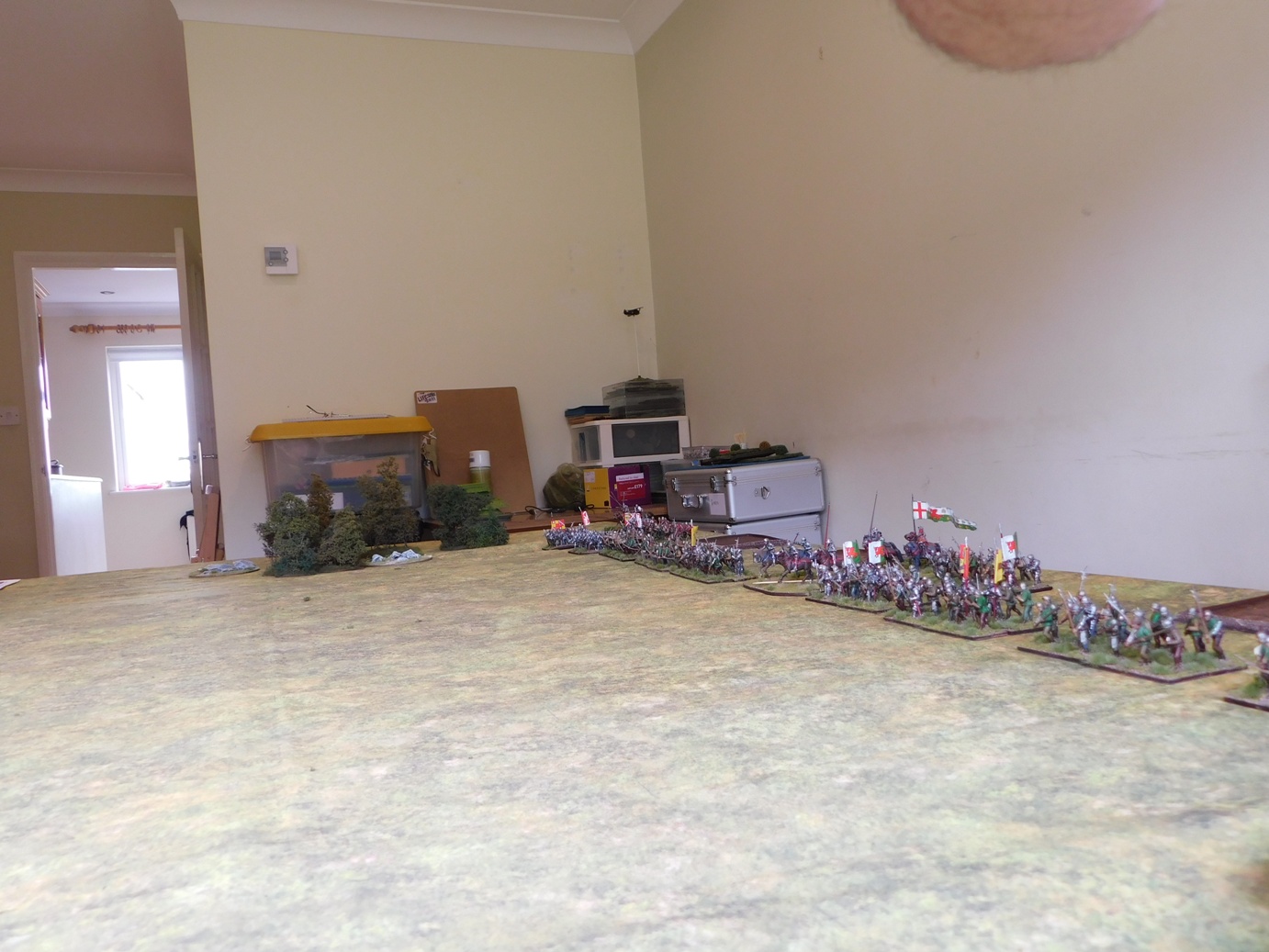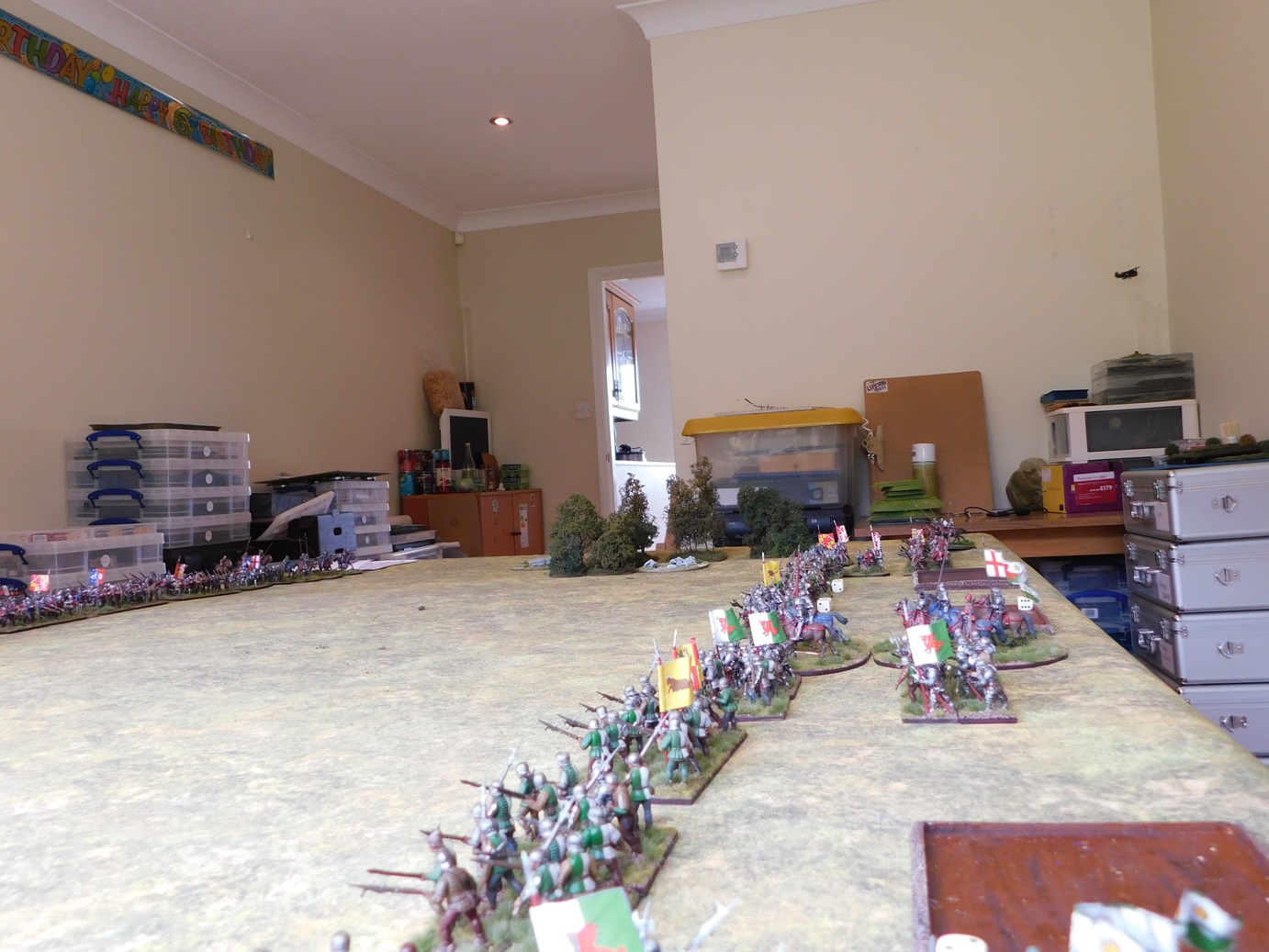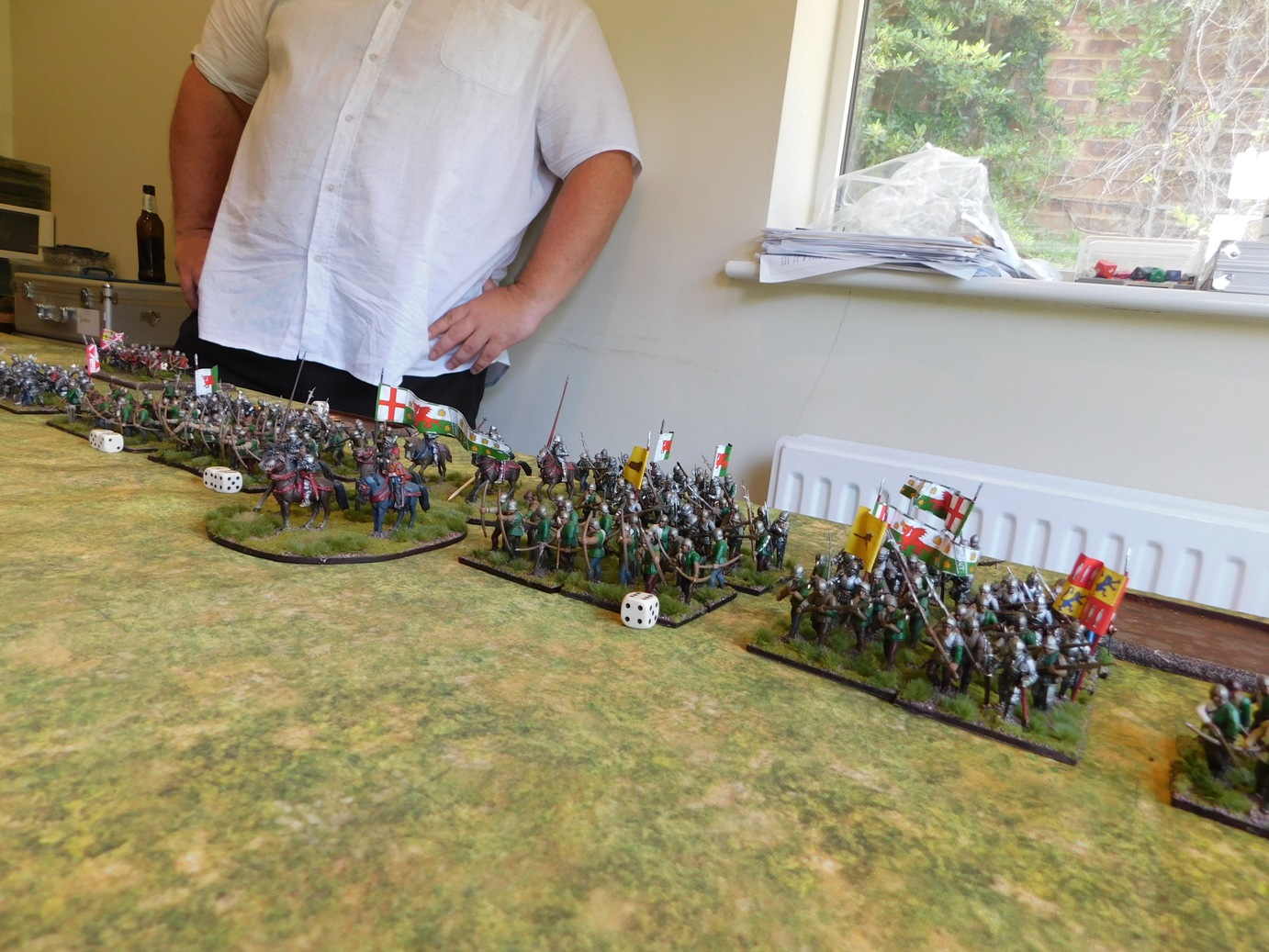Time for another day of To The Strongest: with friend Neil bringing over his vast collection of 28mm Wars of the Roses figures for us to play with. These are all professionally painted Perry Miniatures plastics, including some hobelars specially put together for the occasion.
We managed three games in all.
The first, with me playing Yorkshire, was a nail-biting backwards-and-forwards kind of game where either side could have triumphed. As it happened, my mounted Later Knights, accompanied by Richard of York himself, suddenly managed to burst through the enemy battle line and find the way open to looting the Lancastrian camps. A hard fought victory.
The second, with me now playing the noble house of Lancaster, was again looking close. The two main lines had clashed in the centre of the field, and the luck was swaying backwards and forwards, when each sides’ one unit of Later-Knights-plus-Royal-Personage charged into each other. Luck was obviously on my side, as Richard of York (my erstwhile self but now enemy commander!) was wounded and carried from the field. This gave me the edge and gradually the opposition crumbled. A narrow victory.
Onto the third game, with Neil making sure that I would play to win and not gift him a consolation victory…which just goes to show how little you can know about someone you have known for years! Play to win? I was playing to grind him into the mud! Anyhow, this was a very cagey game: very different to the previous clashes. Neil hung back, not really moving (annoyingly keeping his troops out of the range of my single cannon, the only one on the field) and waiting for me to make the play.
I edged forward, thinking that perhaps I could get a bit of advantage on the right hand side: maybe two archer units vs one, kill them, then try and curl around the edge of his now-slightly-decreased line. Neil read my intentions, however, and moved troops forward to counter. A clash began to develop, and one not in my favour. He moved more units in and my right flank was beginning to crumble, when both of us realised that he had now moved forward into cannon range. Bang went the gun and finished off a unit of Men At Arms, giving me the initiative. Neil sent forward his Household Knights and King to plug the gap and force me back onto the defensive…and then either bang went the gun again or in went my Household Knights (I can’t remember which) and off came the head of Richard of York again!
A horrible piece of luck for Neal which once again swung the game in my favour.: making it a three-victory whitewash to me.
A great day’s gaming, however, but an interesting demonstration of how a non-normal distribution game mechanic can swing a game in seconds. Oh, and Neil wants to know if anyone wants to buy two 28mm Wars of the Roses armies, one with the command figure slightly dented! Here are some pics:



























































